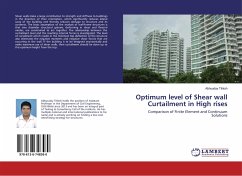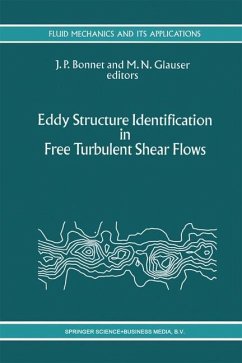
Optimum level of Shear wall Curtailment in High rises
Comparison of Finite Element and Continuum Solutions
Versandkostenfrei!
Versandfertig in 6-10 Tagen
24,99 €
inkl. MwSt.

PAYBACK Punkte
12 °P sammeln!
Shear walls make a large contribution to strength and stiffness to buildings in the direction of their orientation, which significantly reduces lateral sway of the building and thereby reduces damage to structure and its contents. The basic assumption of the analysis of wall-frame structures is that two dissimilar structural systems, deforming in shear and flexural modes, are constrained to act together. The relationship between the curtailment level and the resulting internal forces is investigated. The level of curtailment which results in the minimum top deflection of the structure also eli...
Shear walls make a large contribution to strength and stiffness to buildings in the direction of their orientation, which significantly reduces lateral sway of the building and thereby reduces damage to structure and its contents. The basic assumption of the analysis of wall-frame structures is that two dissimilar structural systems, deforming in shear and flexural modes, are constrained to act together. The relationship between the curtailment level and the resulting internal forces is investigated. The level of curtailment which results in the minimum top deflection of the structure also eliminates the negative moments and negative shear forces that are occurring in the wall. If the building is to be designed economically and make maximum use of shear walls, then curtailment should be done up to this optimum height from the top.












